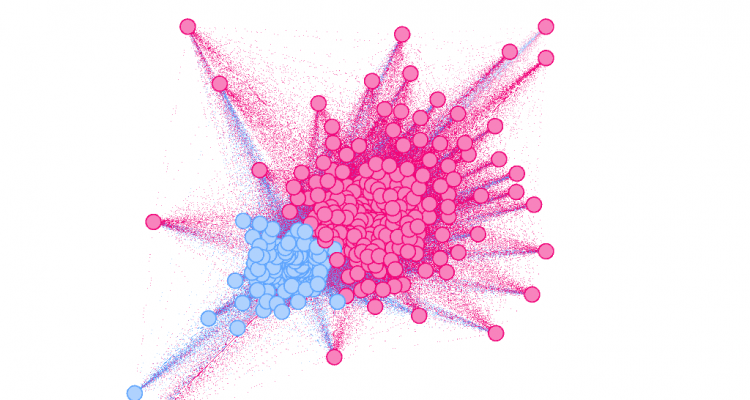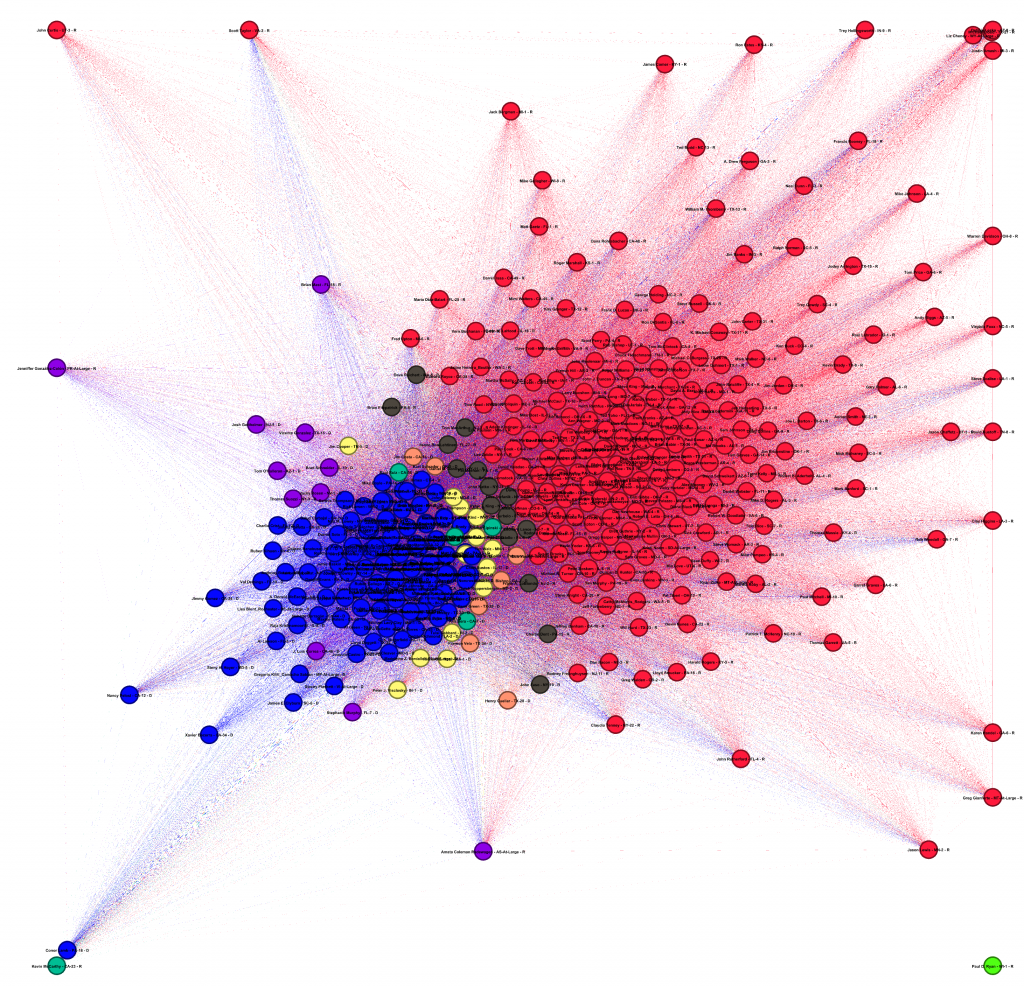By: Patrick W. Zimmerman
Congress is full of self-defined blocs. Beyond the obvious party breakdown, there are groups within each party and (yes, even in these hyper-partisan times), a couple that purport to cross party lines. The Freedom Caucus. The Tuesday Group. The Problem Solvers’ Caucus. The Congressional Progressive Caucus. Et. al. They talk together. They often vote together (c.f. the Freedom Caucus’ effect on the various Trumpcare bills).
…but do they write legislation together?
Let’s analyze the House of Representatives, focusing on one definition of a legislator: someone who creates new laws. We already know that the House is not that efficient at getting laws passed (for better or worse), but what can the attempt to do so tell us about how legislators behave?
Looking at cosponsorships of bills introduced in the last three Congresses, are these self-defined coalitions reflected in how representatives behave when they try to write laws? Their record when judging the work of others is well-documented. Does that behavior change when they can be judged themselves?
The question
What patterns show up in the bill-sponsoring behavior of the US House of Representatives over the last 3 Congresses (113-115)? When treated as a social network, do any distinct communities appear?
The short-short version
The House is a very very compact community. The parties, in large part, tend to clump together on legislation, which isn’t all that unexpected. Partisan voting is pretty naturally associated with partisan authorship.
However, there are some cliques that show up: in total, we identified 8 communities within the House (including the establishment blocs).
Some of the expected caucuses do write legislation together, but others are indistinguishable from the establishment group within their parties, while there are a pair of weird ones that have so far defied identification.
The big absences? The Freedom Caucus and the Congressional Progressive Caucus are nowhere to be found. In terms of legislation sponsorship, those two groups at the end of each party’s political spectrum are indistinguishable from their parties’ establishments.
The results
Out of 433 representatives of the 115th Congress who have cosponsored at least one bill, there were 92,183 connections between them (combinations of reps who had cosponsored at least one bill together. Non-voting members like Jenniffer González-Colón of Puerto Rico can sponsor legislation, even if they don’t get a say in whether or not it passes.
When graphed using Gephi’s ForceAtlas 2 algorithm and a modularity score applied, two tight blocs (the parties) and a couple of identifiable communities appear.
When viewing the graph, two representatives that are closer together (and connected by a line, representing cosponsored bills) are more closely related. The limits of space will mean that a couple of random nodes ended up close together (Conor Lamb and Kevin McCarthy, for example), but for the most part closer to the group = more closely related to the establishment.
So, what are the groups? A couple of them were expected.
- Red – establishment Republicans.
- Blue – establishment Democrats.
- Grey – A moderate-ish group of (mostly Northeast) Republicans, the Tuesday Group.
- Orange – Conservative Democrats, the Blue Dogs.
- Purple – The bipartisan Problem Solvers’ Caucus.
…and there were a couple of surprises.
- Yellow – This is a bloc of left-ish Democrats that is distinct from the Congressional Progressive Caucus.
- Teal – This was a totally weird community that showed up: a couple of Democrats + Kevin McCarthy. No idea what’s going on here.
- Green – …and then there’s Paul Ryan, off by his lonesome.
Here’s a table with all the details, including number of bills introduced, number of members, success with legislation, and partisan lean (DW nominate score, which runs from -1 radical left to +1 radical right).
Mouseover for details.
…and here’s the membership of each group.
Mouseover for details.
As you can see, the little communities are dwarfed by the party establishments. In spite of that, they seem to put together a fair amount of legislation that does not have a noticeably different legislative success rate.
Except you, Paul Ryan. You fail at lawmaking.
Want to know each and every other representative someone has sponsored a bill with, and how often? Of course you do.
Mouseover for details.
What next?
Well, I’d like to do a time-series of this study, to see how the Congressional network has evolved. That will likely take some digging with the API to get further back in time than the 113th Congress.
What’s up next? Well, this is the House. Time to do the Senate.


No Comments on "Congressional cliques: Community detection in bill cosponsorships"